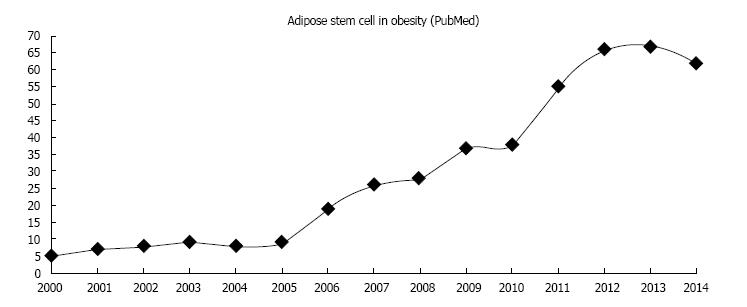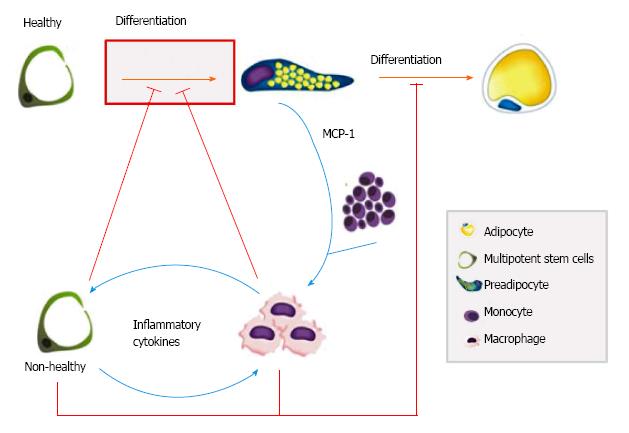Copyright
©The Author(s) 2015.
World J Stem Cells. Jan 26, 2015; 7(1): 165-173
Published online Jan 26, 2015. doi: 10.4252/wjsc.v7.i1.165
Published online Jan 26, 2015. doi: 10.4252/wjsc.v7.i1.165
Figure 1 Annual number of publications referenced in the PubMed database between 2000 and 2014 with the sentence “adipose stem cell in obesity”.
Figure 2 Multipotent stem cells as key players in tissue homeostasis disruption in obesity.
The enormous increase in subcutaneous fat mass leads to an increase in secreted molecules such as monocyte chemotactic protein 1 (MCP-1), which causes monocyte infiltration and subsequent macrophage differentiation (blue lines). Inflammatory cytokines may change multipotent stem cells to a non-healthy phenotype (blue lines) that in turn impairs (red lines) the normal adipogenesis of subcutaneous adipose tissue.
Figure 3 The enrichment of preadipocytes and the density of blood vessels in the adipose tissues of ex-obese patients may play roles in accelerated weight regain.
Even after massive weight loss, ex-obese adipose tissue does not return to a normal cellular state. This adipose tissue is characterized by a higher percentage of CD34 cells and a greater number of small and large blood vessels[26].
- Citation: Baptista LS, Silva KR, Borojevic R. Obesity and weight loss could alter the properties of adipose stem cells? World J Stem Cells 2015; 7(1): 165-173
- URL: https://www.wjgnet.com/1948-0210/full/v7/i1/165.htm
- DOI: https://dx.doi.org/10.4252/wjsc.v7.i1.165















